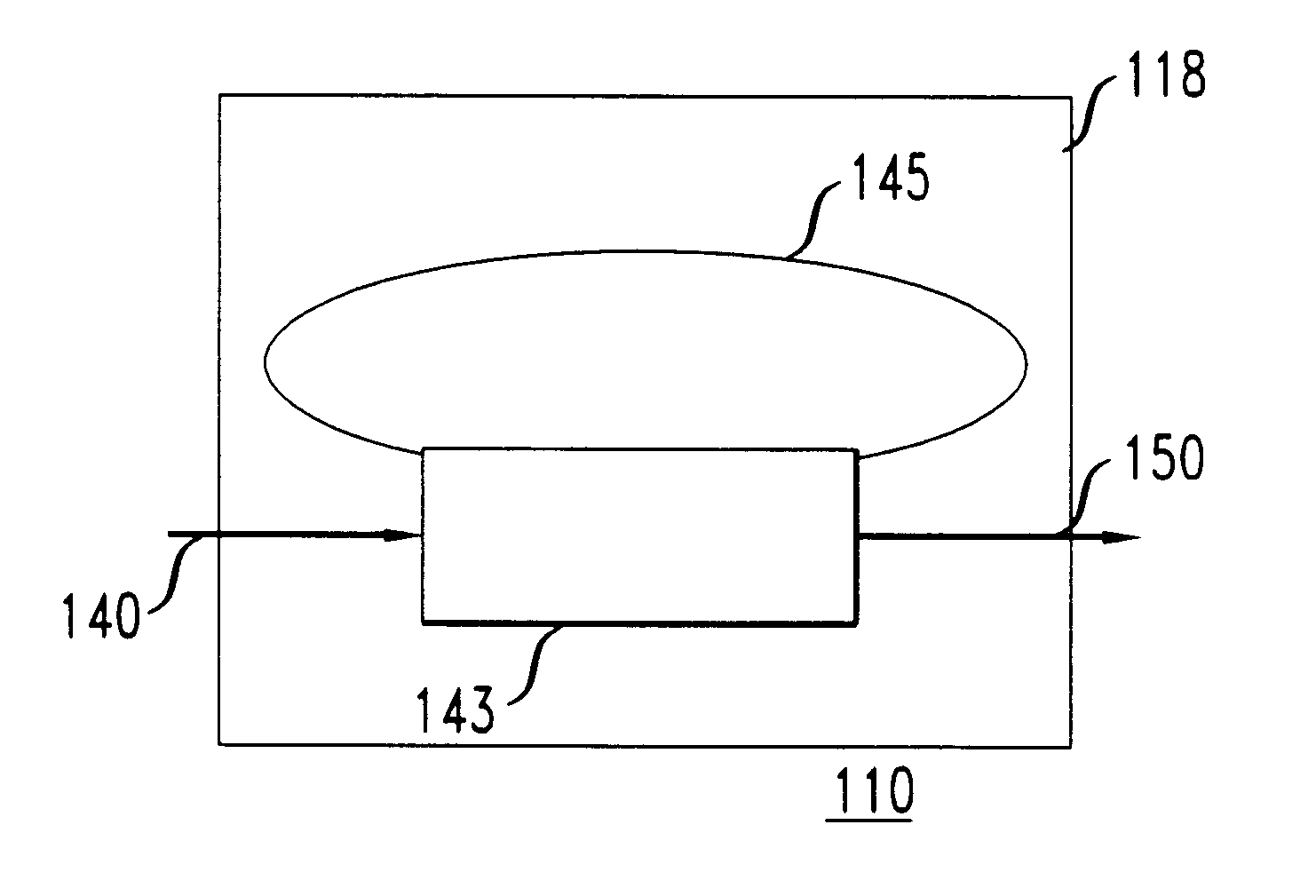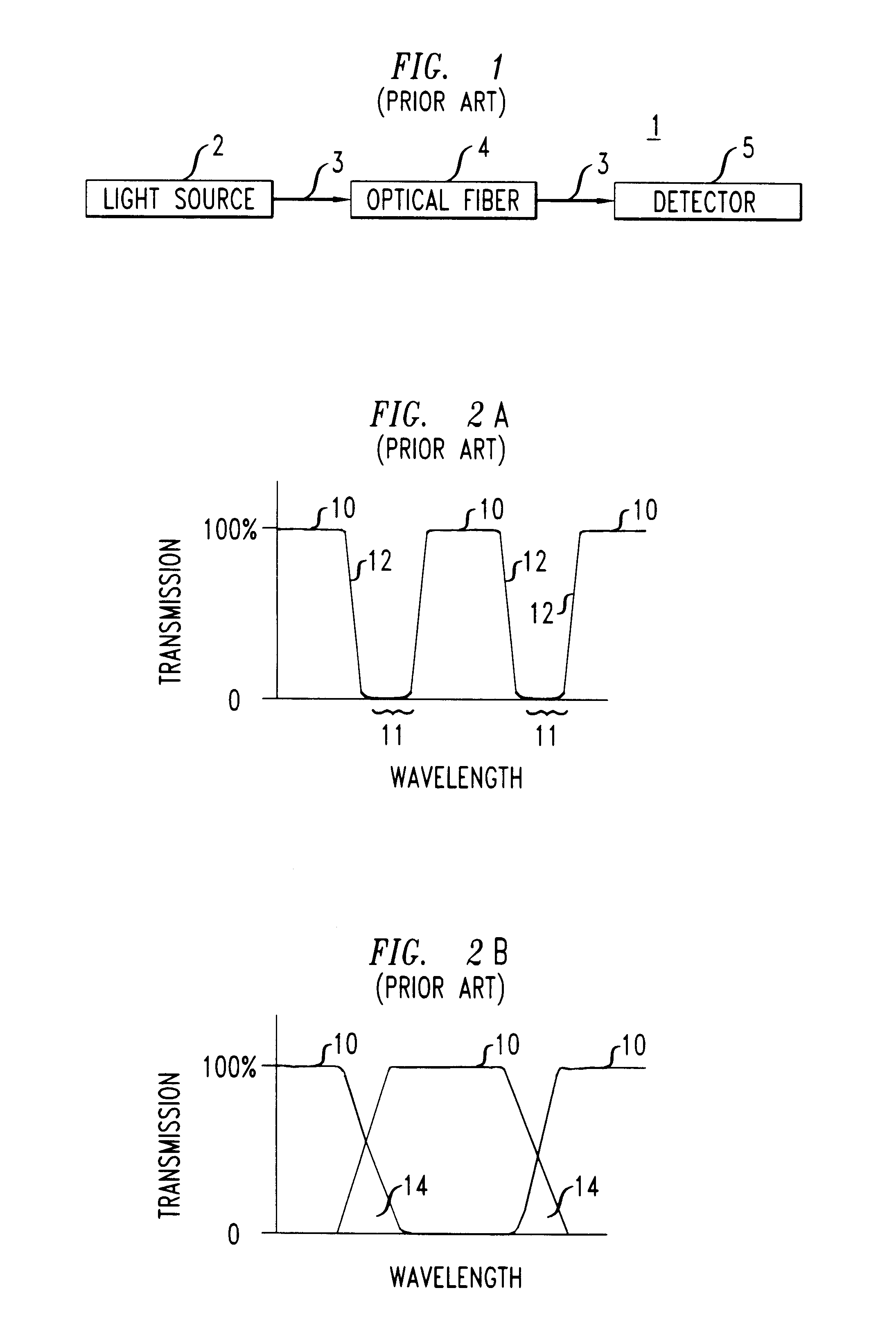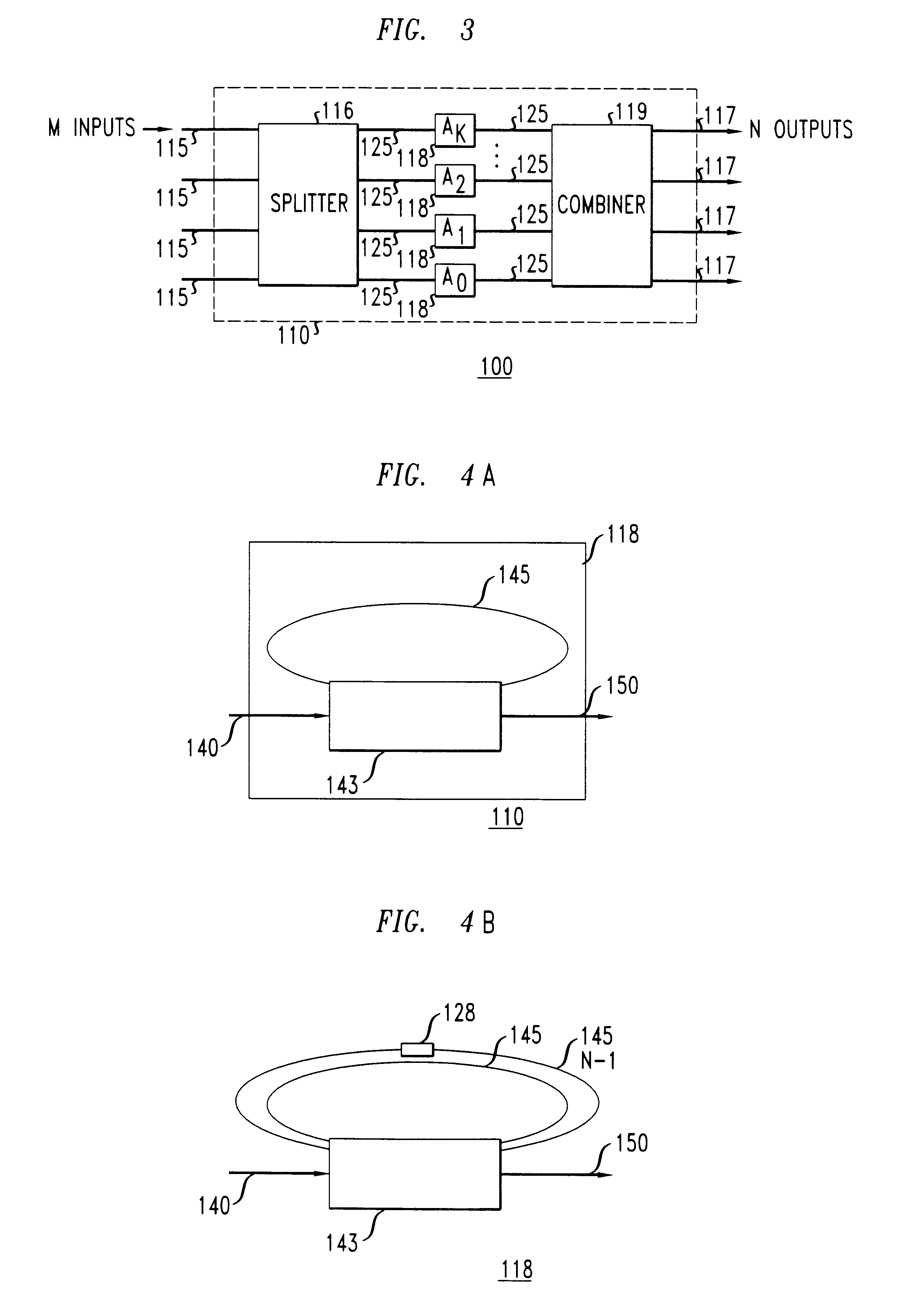Optical channel selector
a selector and optical channel technology, applied in multiplex communication, electromagnetic repeaters, instruments, etc., can solve the problems of interference (crosstalk) between the filter architecture and the transmission capacity of single channel optical communication systems, difficult fabrication, and difficult interfering with each other
- Summary
- Abstract
- Description
- Claims
- Application Information
AI Technical Summary
Problems solved by technology
Method used
Image
Examples
example 2
FIG. 12 depicts a 4.times.4 channel selector with all-pass filters 400 positioned on each optical path 403 connecting two multi-mode interference (MMI) couplers 405. Each optical path 403 has a different path length denoted as 0L, 1L, 2L, and 3L. The all-pass filters 400 in each optical path 403 flatten the passband response of the channel selector without increasing the passband loss. FIG. 13A is a graph of the spectral response for the channel selector shown in FIG. 12. In FIG. 13A the frequency response for each output corresponds to H.sub.1, H.sub.2, H.sub.3, and H.sub.4. The passband of each output response has a peak transmission range that is flat, denoted as 415 on FIG. 13A.
For comparison purposes a graph of the spectral response of a 4-stage filter without all-pass filters, is shown in FIG. 13B. The peak transmission ranges of H.sub.1, H.sub.2, H.sub.3, and H.sub.4 in FIG. 13B, lack passband flatness when compared to the peak transmission ranges of FIG. 13A. Additionally, t...
example 3
A filter with a linear square magnitude response over a frequency range of 0.15.ltoreq..nu..ltoreq.0.85 was designed. The filter is a MZI with a single stage all-pass filter in each arm. The pole magnitudes and phases for the all-pass filters are 0.2925.angle.0.0088 (radians) and 0.7865.angle.-0.0099 (radians), respectively. The remaining design parameters are .kappa.=0.5, .phi.=-0.7121, and 2.beta.=-1.5896 rad. The square magnitude response for this second-order filter is shown in FIG. 14. The square magnitude response is linear to within about .+-.0.005 over 0.18.ltoreq..nu..ltoreq.0.82. Filters with such a square magnitude response are suitable as frequency discriminators for laser wavelength stabilization and modulators which respond linearly to the input signal for analog transmission.
example 4
A filter 500 having the structure shown in FIG. 15A was designed. The filter 500 is a MZI 501 with a single ring resonator 502 in one arm 515. Each arm 502, 515 of the MZI 501 has a specified length (M, N). The ratio (.rho.) of the lengths (M, N) of each arm 502, 515 applies frequency dependent phase changes to multi-channel optical signals transmitted therethrough. When the ratio of the lengths of each arm of the MZI are varied, the filter has a stair-case magnitude response which provides a particular transmission response. For a stair-case magnitude response, both the cross and bar transmissions typically have intermediate steps that are about constant.
A MZI with arm lengths 502 (M=4), 515 (N=3) has the magnitude response shown in FIG. 15B. The transmission response of arm 502 and the transmission response 515 include cut-off regions which have intermediate steps 511. Frequencies which correspond to the intermediate steps 511 are partially transmitted by the filter. Filters with ...
PUM
| Property | Measurement | Unit |
|---|---|---|
| reflectivity | aaaaa | aaaaa |
| frequency | aaaaa | aaaaa |
| frequency response | aaaaa | aaaaa |
Abstract
Description
Claims
Application Information
 Login to View More
Login to View More - R&D
- Intellectual Property
- Life Sciences
- Materials
- Tech Scout
- Unparalleled Data Quality
- Higher Quality Content
- 60% Fewer Hallucinations
Browse by: Latest US Patents, China's latest patents, Technical Efficacy Thesaurus, Application Domain, Technology Topic, Popular Technical Reports.
© 2025 PatSnap. All rights reserved.Legal|Privacy policy|Modern Slavery Act Transparency Statement|Sitemap|About US| Contact US: help@patsnap.com



